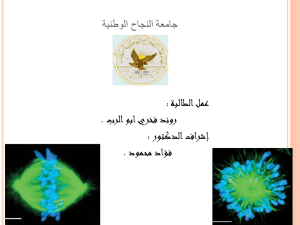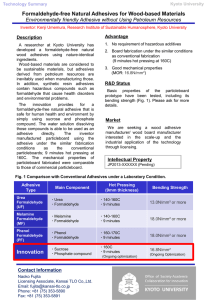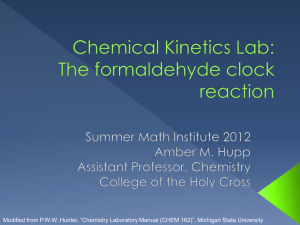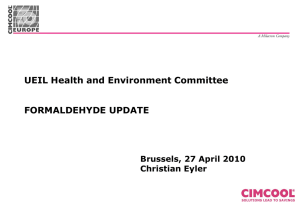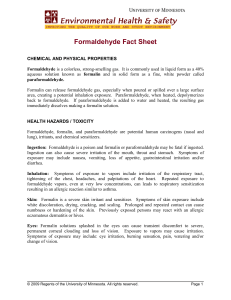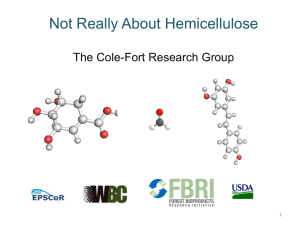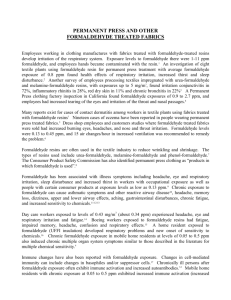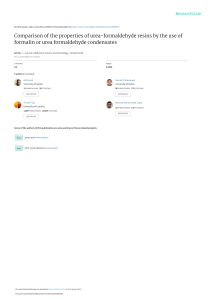Forestry 485
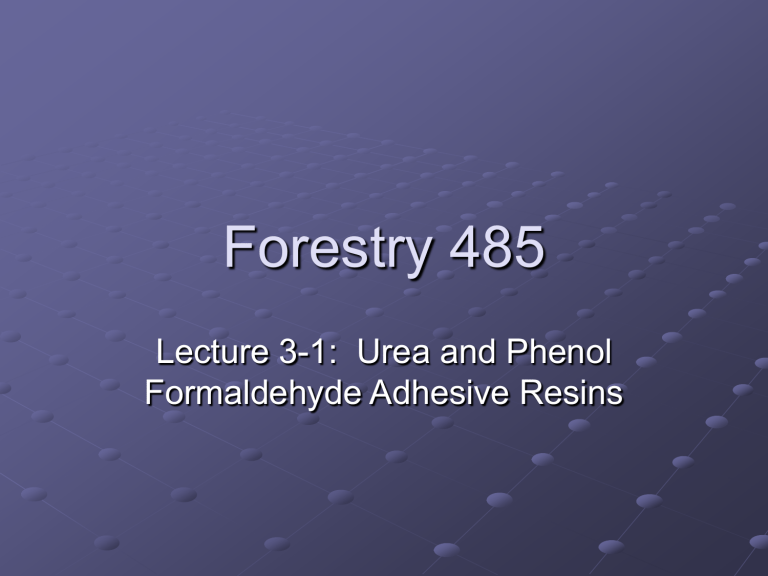
Forestry 485
Lecture 3-1: Urea and Phenol
Formaldehyde Adhesive Resins
Thermosetting Resins for Wood
Composites
Panel Products - three primary resins in use in North America:
Urea formaldehyde (water resistant bond), used exclusively for interior applications
Phenol formaldehyde (fully exterior, waterproof bond), used almost exclusively for exterior application and/or structural products
Polymeric MDI (water resistant to water proof), used mainly as a core resin in OSB
Urea Formaldehyde (UF)
Synthesis
Cure chemistry
UF Synthesis
UF is an “amino resin” or “amineformaldehyde” class of adhesive
UF is synthesized by the reaction of urea and formaldehyde to obtain stable, but reactive intermediates
Storage stability due to reduced reactivity of intermediates in alkaline conditions
(>pH 7)
UF Synthesis
Mild alkali
(pH>7) pH is used to control reaction rate. Occurs very rapidly under acidic conditions.
Production of the reactive intermediates is monitored and controlled by viscosity.
Note methylolation of urea residue.
UF Synthesis, continued
Other intermediates, such are dimethylol urea, are also formed
Again, viscosity is monitored to indicate the stage of the synthesis. Increasing viscosity is correlated to polymer growth; this indicates how “advanced” the resin is pH is maintained above 7 to slow polymerization and thereby increase storage life
UF Cure Chemistry
Polymerization of the reaction intermediates
Results from chemical reaction to build polymer chain length and molecular weight
Polymerization is characterized as a
“condensation reaction”
Resin changes from low to high viscosity liquid and ultimately to solid
Resin hardening corresponds to development of mechanical strength of adhesive bond
UF Condensation Reaction: Favored by acidic conditions
Condensation may be linear or crosslinked
Result: Cured network (crosslinked) molecular structure
UF Condensation
Controlled by:
Temperature (150 o C cure temperature)
Time pH (>7, stable; <7, condensation)
Reaction accelerated by “curing agent” or “hardener”
Mineral acid (e.g., HCl) or salts (e.g., ammonium chloride) See
Reading 3-1c
Ratio of formaldehyde to urea
Molar ratio varies from just >1.0 to approx. 1.5
Lower molar ratios favored in contemporary formulations to reduce formaldehyde emissions. Most are <1.1
Formaldehyde scavengers may be used (see Reading 3-1d)
Phenol formaldehyde (PF) adhesive resins
Two major types:
Resole (cross-linking thermosetting resin)
Novolac (resin with some thermoplastic properties)
Synthesis
Condensation reactions (resin cure)
PF Synthesis: Resoles
Two stages:
Methylolation of phenol to produce methylol phenols.
First stage, or “A” stage, is alkaline catalyzed for the synthesis of resoles
Alkaline A stage, P/F ratio=1:1 to 1:3 (i.e., molar
EXCESS of formaldehyde)
B stage is the condensation of intermediates to produce water insoluble, but fusible products.
Reaction is monitored by viscosity and terminated prior to complete polymerization.
Resole “A”
Methylolation may occur at ortho, meta, or para position.
Resole “B”
Note that an excess of formaldehyde is used. This promotes full methylolation of the phenol moieties.
Resole “C” (curing)
Process cure temperature typically
190-200 o C. ONLY heat is needed to cure.
Threedimensional cross-linked structure is formed.
Water insoluble.
Novolac Synthesis
P/F ratio is > 1.0 (note error in figure on p. 78 of
Marra; in fact, note somewhat unorthodox means of representing P:F ratio on p. 77 & 78)
Acid A stage, P/F ratio=1:1 to 1:0.6
Few methylols are formed; results in linear, rather than cross-linked structure.
Has indefinite shelf life.
Soluble, (partially) thermoplastic.
Hardener in the form of additional formaldehyde is needed for cure.
Novolac synthesis
Formaldehyde donors for cure:
Formalin
Paraformaldehyde
Hexamethylenetetramine (“hexa” hardener)
Resole vs. Novolac
Resole
A-stage is a low molecular weight “impregnating” resin
(use for making Impreg,
Compreg, and laminating materials)
B-stage is a bonding
(adhesive) resin
Needs ONLY heat to polymerize
Continues to polymerize in storage (limited shelf life)
Novolac
Fewer methylol groups, thus much less crosslinking (linear structure)
Formaldehyde must be supplied to cure, along with heat
Resin is soluble and thermoplastic
Has an indefinite shelf life
May be supplied in sheet or flake form (dry)
